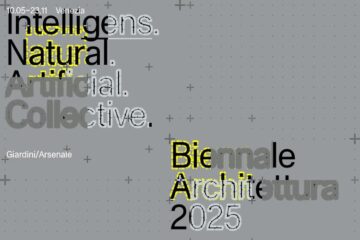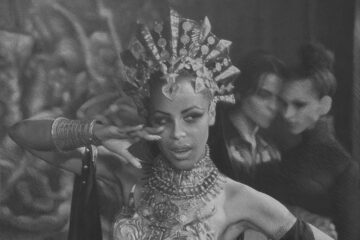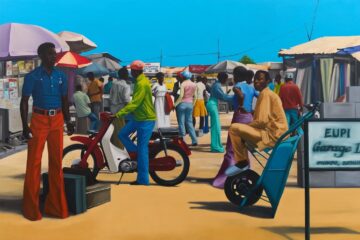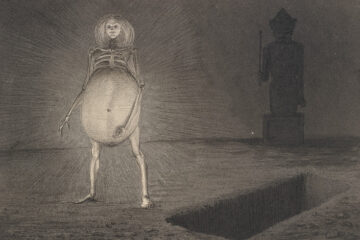![Dialoghi Contemporanei con Tintoretto [Contemporary Dialogues with Tintoretto], exhibition view at Galleria Giorgio Franchetti alla Ca' D'Oro Image Courtesy: Zuecca Projects. Photo: Marco Dabbicco](https://www.thephotophore.com/wp-content/uploads/2018/10/dialoghi-contemporanei-con-tintoretto-001.jpg)
Image Courtesy: Zuecca Projects. Photo: Marco Dabbicco
“Dialoghi Contemporanei con Tintoretto” [“Contemporary Dialogues with Tintoretto“] is the new exhibition inaugurated in Venice on October 20, 2018, as part of the celebrations for the 500th anniversary of the birth of the great painter.
There are two locations for this widespread exhibition: the Galleria Giorgio Franchetti alla Ca’ D’Oro and Palazzo Ducale.
As well as two macro themes are the background of the “dialogues“: “Faces” and “Stories“.
![Dialoghi Contemporanei con Tintoretto [Contemporary Dialogues with Tintoretto], exhibition view at Galleria Giorgio Franchetti alla Ca' D'Oro Image Courtesy: Zuecca Projects. Photo: Marco Dabbicco](https://www.thephotophore.com/wp-content/uploads/2018/10/dialoghi-contemporanei-con-tintoretto-006.jpg)
Image Courtesy: Zuecca Projects. Photo: Marco Dabbicco
Contemporary Dialogues with Tintoretto: The importance of the “dialogues”
“Contemporary Dialogues with Tintoretto” is a special exhibition, because it has taken the bold task of comparing the production of one of the most important artists of the Italian Renaissance, with works created by today contemporary artists.
It is such a vast subject and it risks disorienting. And the exhibition disorients, in fact. But in a positive sense.
The curator, Ludovico Pratesi, together with the organizer Zuecca Projects, decided not to force their hand indicating a precise direction for the reading of the exhibition.
The “dialogue” trickle has the intent to let a series of relationships, of “dialogues“, emerge from the visual contact between the works, almost spontaneously.
The task left (also) to the observer is fundamental. There is the possibility, almost the necessity, to reconstruct the intertwining of the works.
An exhibition that is not only to be “watched“, therefore, but almost to be “heard“, and certainly to be “lived“, to gather how much the works have to say. To try to understand what unites them and what divides them.
![Dialoghi Contemporanei con Tintoretto [Contemporary Dialogues with Tintoretto], exhibition view at Galleria Giorgio Franchetti alla Ca' D'Oro Image Courtesy: Zuecca Projects. Photo: Marco Dabbicco](https://www.thephotophore.com/wp-content/uploads/2018/10/dialoghi-contemporanei-con-tintoretto-004.jpg)
Image Courtesy: Zuecca Projects. Photo: Marco Dabbicco
Contemporary Dialogues with Tintoretto: the section “Faces” at Ca’ D’Oro
The most conspicuous part of the contemporary works is exhibited at the Ca’ D’Oro, a superb 15th-century palace on the Grand Canal. The building is the museum container of the Galleria Giorgio Franchetti, which houses in its collection the Portrait of Procurator Nicolò Priuli by Tintoretto (1545).
The painting by Tintoretto is placed at the center of the large “portego“ on the second floor [the main room of the Venetian palaces], as at the head of the table, with its back to the loggia that overlooks the city.
Along the sides of the room there are the guests, the 12 works of some of the most renowned artists of the contemporary art scene: Michaël Borremans, Glenn Brown, Roberto Cuoghi, John Currin, Chantal Joffe, Victor Man, Yan Pei-Ming, Matthew Monahan, Wangechi Mutu, Celia Paul, Markus Schinwald and Josh Smith.
From this reverential disposition, which has Tintoretto’s painting as a vanishing point, the “dialogues“ can begin.
All the works are interpretations of the “portrait“, of the “face“. They are different representations of the human being.
The voices of the artists, of course, are all different. But every work has something that overlaps, or opposes, the lesson of Tintoretto, creating an endless series of possible sub-themes in the relationship with the work of the Master.
![Dialoghi Contemporanei con Tintoretto [Contemporary Dialogues with Tintoretto], exhibition view at Galleria Giorgio Franchetti alla Ca' D'Oro Image Courtesy: Zuecca Projects. Photo: Marco Dabbicco](https://www.thephotophore.com/wp-content/uploads/2018/10/dialoghi-contemporanei-con-tintoretto-003.jpg)
Image Courtesy: Zuecca Projects. Photo: Marco Dabbicco
There are works that can be put into dialogue following to the theme of the “portrait of great personalities“, for example. In serious and humorous ways. Like the portrait of the French Emperor Napoleon, in Napoleon, Crowing Himself Emperor – Black (2017) by Yan Pei-Ming or like the portrait of the guitarist Arto Lindsay, Untitled (Portrait of Arto Lindsay), (2009) by Roberto Cuoghi. Both renowned public personalities like the old Venetian procurator Nicolò Priuli.
There are works that emphasize the expression of the faces, highlighting the psychological implications of the characters. Like the humble, almost sad, portraits of Victor Man, Untitled (2011), and Celia Paul, Head of Kate (1993-2014). Or the radiant, cheerful one by John Currin, Anita Joy (2001). All in a horizontal relationship, like a “variation on the same theme“, with the slightly contemptuous, quite haughty and hieratic gaze of Nicolò Priuli by Tintoretto.
There are works that instead highlight the opposite perception between the ancient, mimetic and institutional portrait and the “complex“, “disarticulated” portrait of the contemporary times, almost with a cubist inspiration. This is the case of the works of Wangechi Mutu, Automatic Hip (2015) and Matthew Monahan, Secret Handshake (2016).
A thousand are the interweaving of the works, the themes that can emerge to explain similarities and differences between the artistic work of five hundred years ago and the ones of the last years.
![Dialoghi Contemporanei con Tintoretto [Contemporary Dialogues with Tintoretto], exhibition view at Palazzo Ducale Image Courtesy: Zuecca Projects. Photo: Marco Dabbicco](https://www.thephotophore.com/wp-content/uploads/2018/10/dialoghi-contemporanei-con-tintoretto-005.jpg)
Image Courtesy: Zuecca Projects. Photo: Marco Dabbicco
Contemporary Dialogues with Tintoretto: the section “Stories” at Palazzo Ducale
Palazzo Ducale is the home of the Venetians. Par excellence. It is the place where the Doge, the ancient political leader of the Serenissima, lived, and where the political power of the city was carried out.
And since the ancient governments believed in beauty (in addition to having understood the absolute importance of visual propaganda), at Palazzo Ducale there is a great cycle of paintings by Tintoretto, realized between 1564 and 1592.
In these days, in addition, at Palazzo Ducale there is also another major exhibition dedicated to Tintoretto, TINTORETTO 1519-1594, with 70 artworks exhibited.
This great collection of works is the background of the second section of Contemporary Dialogues with Tintoretto: “Stories“.
In the room named “Quarantia Civil Vecchia“, next to the 16th century paintings, there are two great works by a Venetian artist from the last century: Emilio Vedova.
![Dialoghi Contemporanei con Tintoretto [Contemporary Dialogues with Tintoretto], exhibition view at Palazzo Ducale Image Courtesy: Zuecca Projects. Photo: Marco Dabbicco](https://www.thephotophore.com/wp-content/uploads/2018/10/dialoghi-contemporanei-con-tintoretto-007.jpg)
Image Courtesy: Zuecca Projects. Photo: Marco Dabbicco
Vedova was an abstract artist, so it might seem to have little to do with Tintoretto, apart from the common birthplace.
But it is not so. Vedova’s works chosen for the exhibition are large circular paintings full of expressive force, of informal gestures, which seem to express the swirling emotions derived from the simultaneous view of all the great painting that covers the walls of the building.
It’s as if all the History of Art contained in this palace-chest had been blended in the artist’s head and had been poured on the disks.
The circular shape of these paintings is not a case. Because the circle, the wheel, is the tangible expression of the movement. What we can see in Vedova’s works is what we would perceive if we put ourselves in the Doge’s apartment and turn around at great speed.
It’s as if the enormous artistic force of Tintoretto, from the walls, was concentrated in a single point, on a single painted surface.
Here then the “Stories” of Tintoretto are in dialogue with their “concentrate homologous” painted by Vedova. Thus the “story“ of Tintoretto, a great Venetian Renaissance artist, and the “story“ of Emilio Vedova, a great Venetian twentieth-century artist, are superimposed.
In a more intimate, more local “dialogue“, but not less charged with important intertwining for the History of Art.
![Dialoghi Contemporanei con Tintoretto [Contemporary Dialogues with Tintoretto], exhibition view at Galleria Giorgio Franchetti alla Ca' D'Oro Image Courtesy: Zuecca Projects. Photo: Marco Dabbicco](https://www.thephotophore.com/wp-content/uploads/2018/10/dialoghi-contemporanei-con-tintoretto-002.jpg)
Image Courtesy: Zuecca Projects. Photo: Marco Dabbicco
Dialoghi Contemporanei con Tintoretto
[Contemporary Dialogues with Tintoretto]
20.10.2018 – 07.01.2019
Galleria Giorgio Franchetti alla Ca’ D’oro
Palazzo Ducale
Venice
Organized by:
Zuecca Projects, Polo museale del Veneto, Galleria Giorgio Franchetti alla Ca’ D’Oro, Fondazione Musei Civici Venezia, Palazzo Ducale
Sponsored by:
Hausbrandt Trieste 1892 S.p.A., The Bauer Hotels Venezia S.p.A.
Supported by:
House of Nobleman, AmC Collezione Coppola, Collezione Giuseppe Iannaccone, Gagosian Gallery, Galleria Massimo De Carlo, Victoria Miro Gallery
Text by Domenico Fallacara | the PhotoPhore
Discover: www.zueccaprojects.org



